One of the most famous fighters of all time is the P-51 Mustang. Yet, relatively few people know about the North American F-82 Twin Mustang: an operational combat escort fighter that appeared to be a pair of P-51s mated together. While it might have looked a bit odd, it played an important role during the post-WWII era.
Originally designed as a very long-range escort (VLR) for the B-29 Superfortress flying missions over Japan, the F-82 entered WWII too late. It became a replacement for battle-weary P-61 Black Widow night fighters post-war. It was a key asset at the beginning of the Korean War and served America in Alaska as an interceptor. Although its service life was short, its accomplishments were many.
The Design
Development of the Twin Mustang began in October 1943. Many people think the twin Mustang was just two Mustangs bolted together, but not so. The P-82 has only a 20% commonality with the P-51 Mustang. The two fuselage sections were redesigned and extended 57”, dorsal fins were added forward of the tailplane, and the landing gear wheels were moved and retracted into the fuselage sections. The two sections were joined together by a center wing section equipped with six .50-cal. machine guns, each with a capacity of 400 rounds.
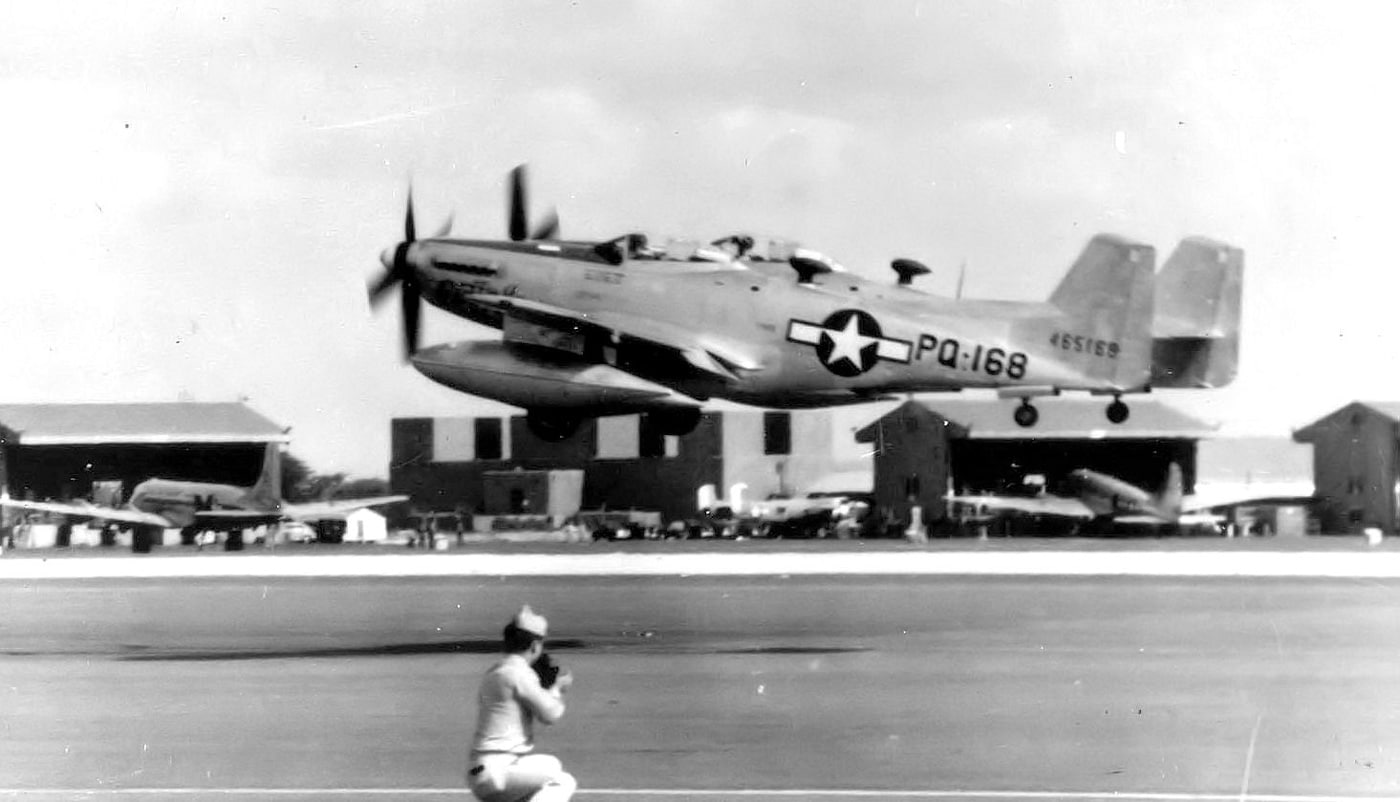
The power plants were twin Rolls Royce Merlin engines built in America by Packard motors under license from Rolls Royce. As production increased, so did the licensing fees, so the U.S.A.F. went to the General Motors Allison division to produce the V-1710-100, which, unfortunately, was not as powerful as the Merlin. As earlier production units were used as training aircraft, the twin Mustang became one of the few aircraft with a faster trainer than the combat version.
The production P-82s had fully equipped dual cockpits with flight controls to allow pilots to swap off piloting duties during extended missions.

The prototype’s first flight was on June 26, 1945, and production deliveries did not begin until early 1946, as many finished airframes sat at the North American Plant waiting on the new American-made Allison engines.
In 1948, the brand-new United States Air Force redesignated all P-82s (Pursuit) to F-82s (Fighter).
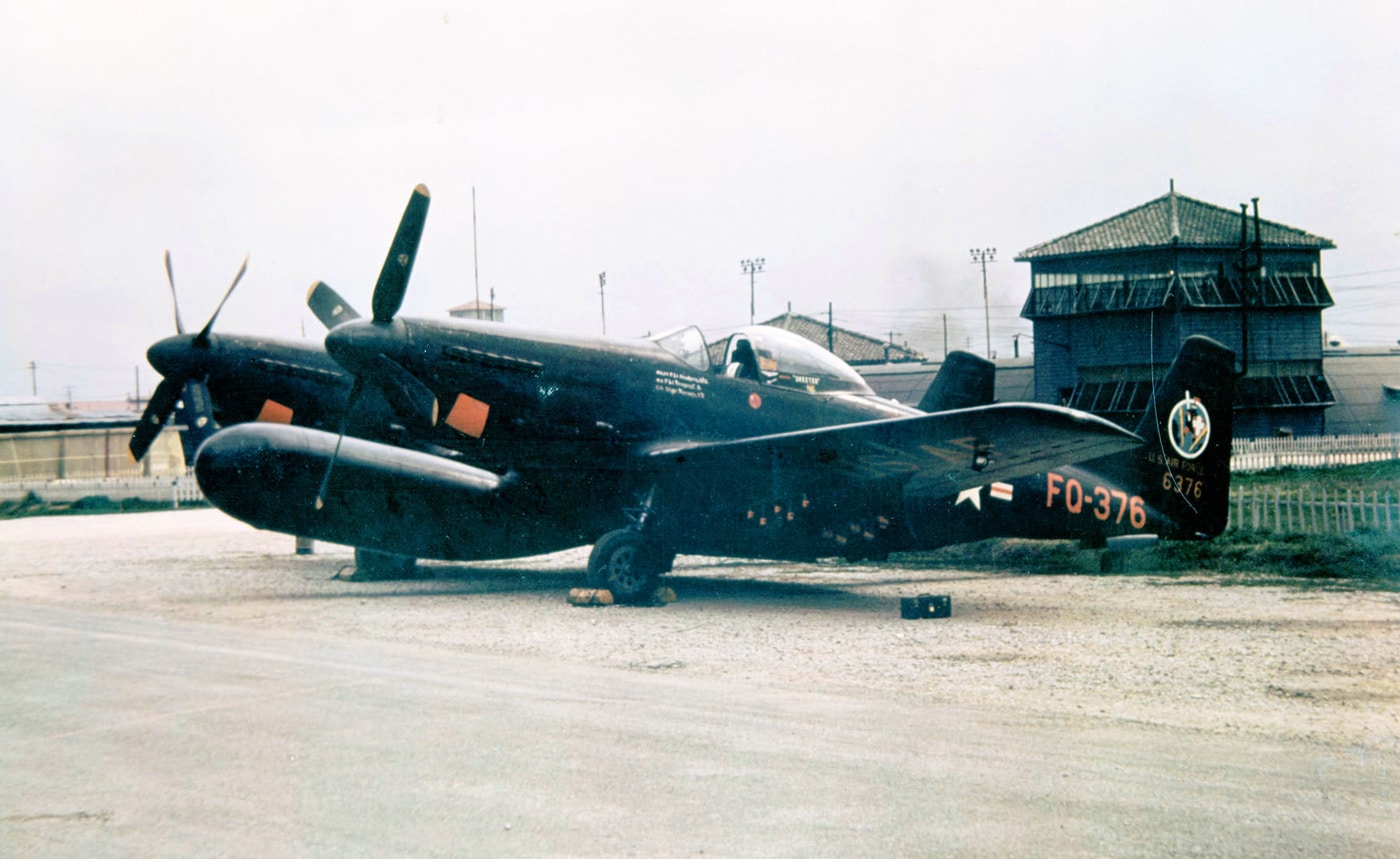
With the war over, in 1948, the Air Defense Command flew radar-equipped F-82Gs as interceptor replacements for the WWII P-61 night fighter. This was due to the delays of the jet-powered Northrop F-89 Scorpion, which wasn’t scheduled to be in service until 1952.
Performance
The newly designated F-82 was powered by two Packard V-1650s of 1,380 hp each and had a maximum speed of 482 mph and a range of 1,400 to 2,200 miles, depending on configuration. The service ceiling was approximately 40,000 ft. The armament consisted of six .50-cal. machine guns, 25 5” rockets, and 4,000 lbs. of ordnance.
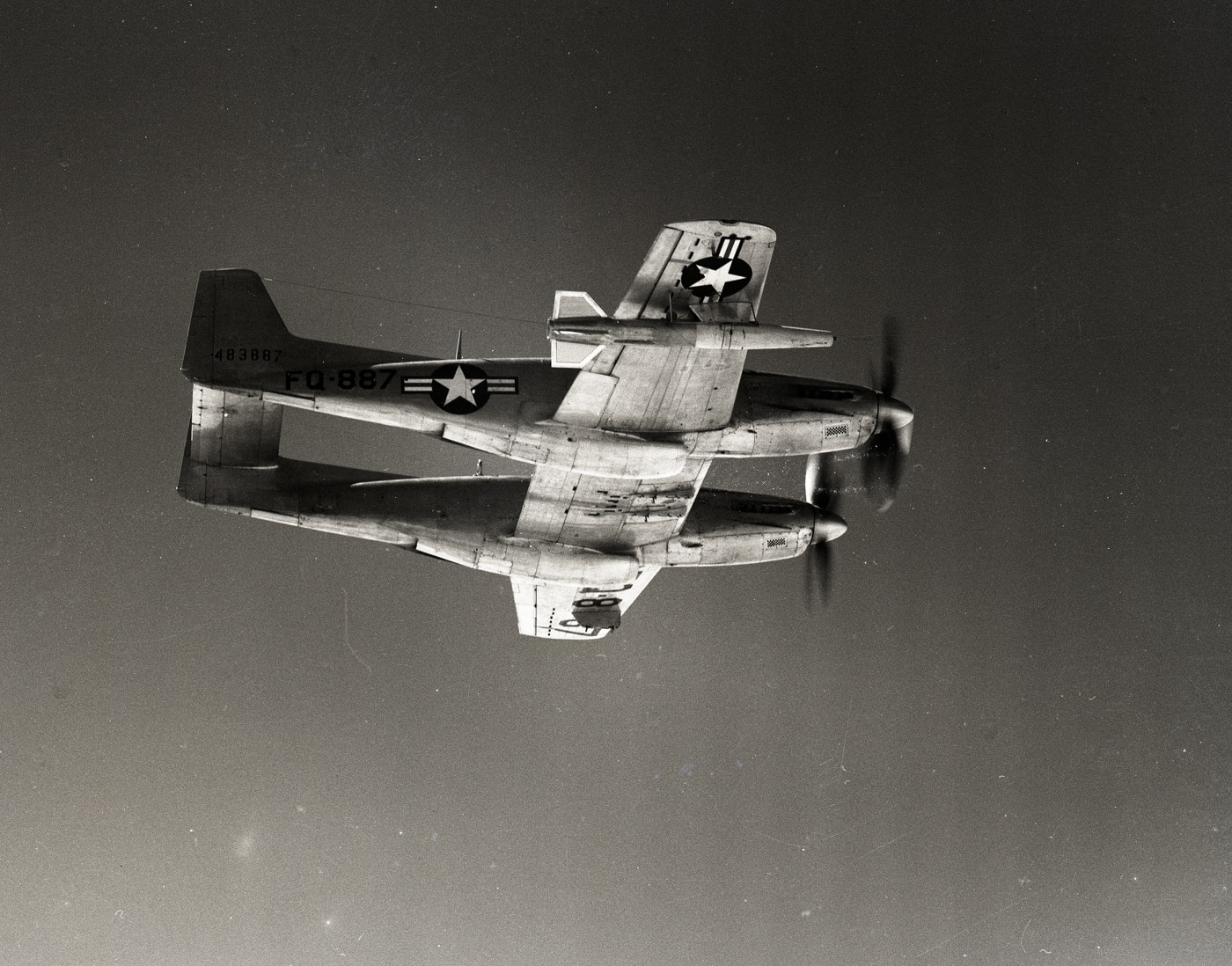
On February 27, 1947, P-82B “Betty Jo” made history when it made a non-stop flight from Hawaii to New York, covering 5,051 miles in 14 hours and 32 minutes. The Twin Mustang was equipped with four external fuel tanks, which gave it a total of 1,816 gallons of fuel. This record remains today as the longest non-stop flight by a propellor-driven fighter aircraft.
Korea and the First Kill
The P-82 finally saw combat in Korea. On June 25, 1950, the invasion of South Korea began when 90,000 North Korean troops punched through the 38th parallel and made fast gains. F-82 alert crews at Itazuke AB, Japan, were ordered to fly to the area on a reconnaissance mission. Upon arrival, the crews saw large convoys of North Korean trucks and tanks. This was considered the first combat mission of the Korean War.
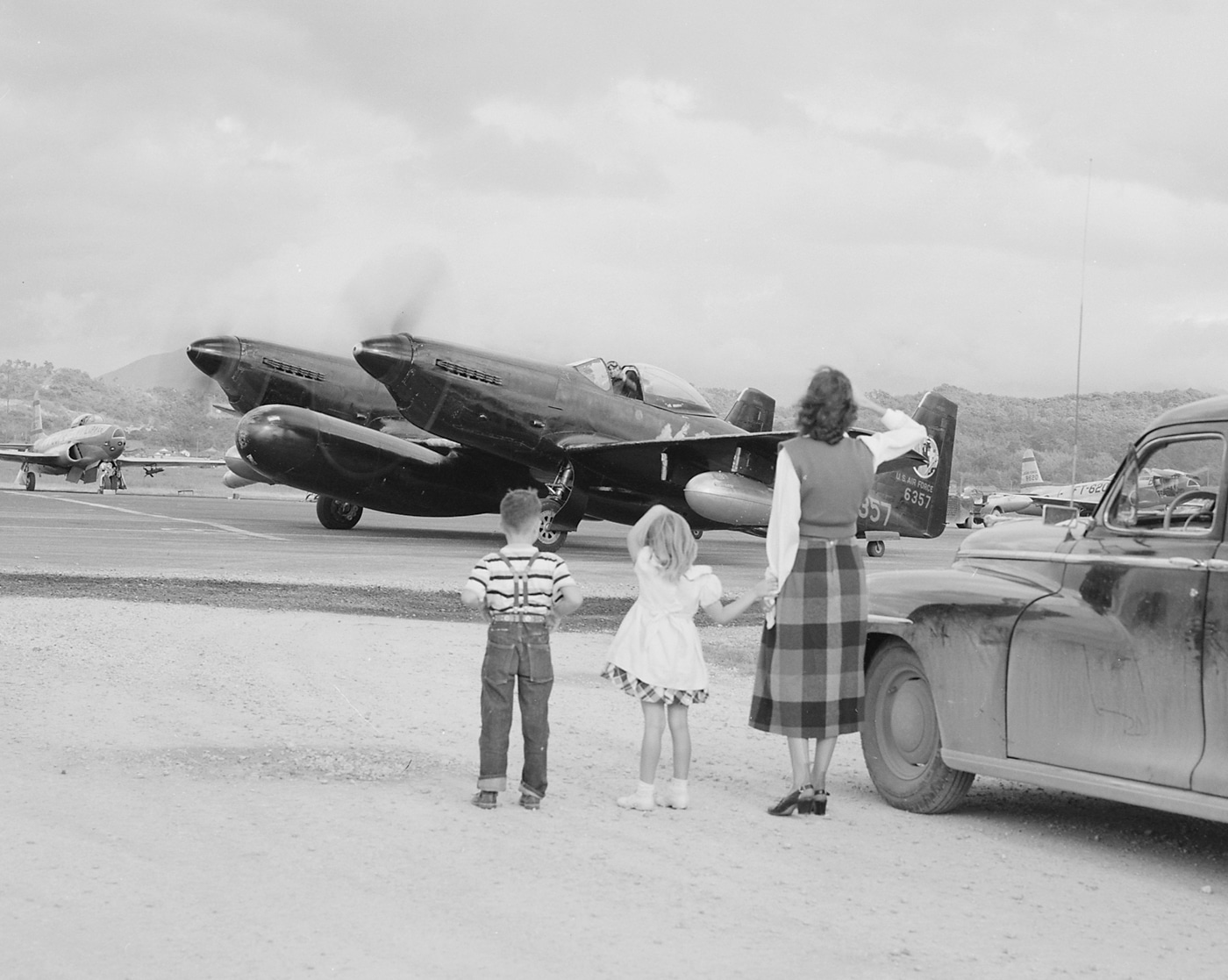
The situation deteriorated quickly, and the priority was to evacuate U.S. citizens and non-military personnel out of the country. F-82 crews flew cover at Inchon and assisted with the evacuation of 682 civilians. As the North Koreans and Chinese pushed farther, a flood of refugees headed to Kimpo Airfield for passage to Japan, and F-82 crews were dispatched to provide cover for C-54 transports flying passengers out.
On June 27th, 27 F-82s from the 347th Provisional Fighter Group were dispatched from Yokota AB and Itazuke AB to Kimpo. Flying in three flights, all was quiet until a mixed group of five enemy fighters were spotted heading toward the airfield.
A YAK-11 fired and scored hits on one of the group’s F-82s. Lt William “Skeeter” Hudson went into pursuit and hit the YAK with a burst of .50 caliber. The YAK attempted to evade, but Hudson poured another burst into the right wing, blowing off a flap and setting the wing tank ablaze.
The North Korean pilot bailed while the observer went down with the aircraft. When the enemy pilot landed on the Kimpo airfield, he pulled out his pistol and began firing at South Korean soldiers, who promptly killed him. Lt. Hudson scored the first kill of the Korean War, and his radar operator, Lt. Fraser, was able to take a photo as the aircraft went down.

The second shootdown was by an F-82 piloted by Lt. Charles Moran, who downed an La-7 that had shot up his F-82, and the third kill in an F-82 was also a La-7 and was downed by Maj. James Little.
North to Alaska
In 1948, six F-82 F/Gs were modified for cold weather. The H model was born and assigned to the 449th FAWS All Weather Fighter Squadron at ADAK Island, Alaska, to replace the P-61 Black Widow in the Alaskan Air Defense Zone.
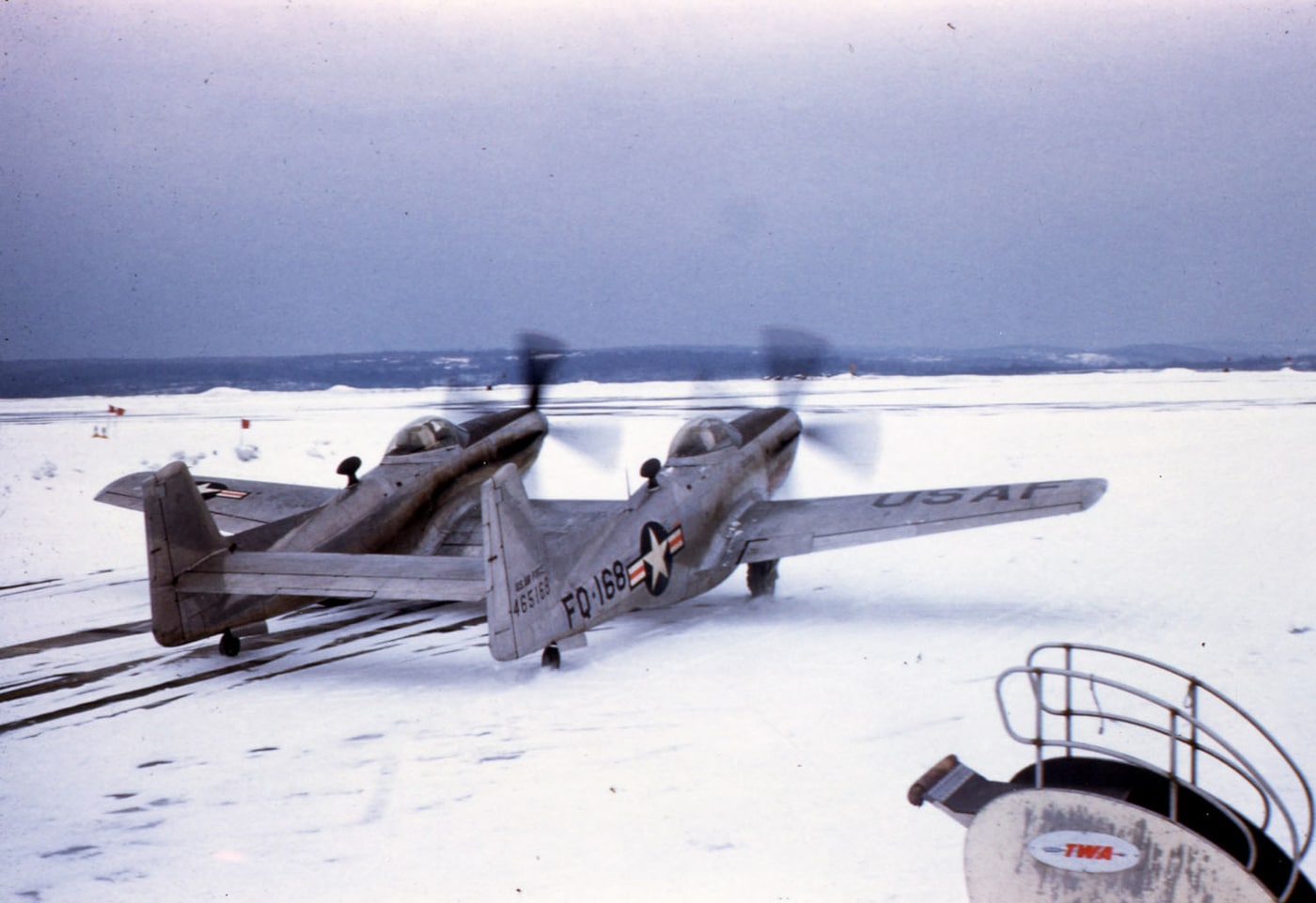
In March 1949, the unit was re-assigned to Ladd Field at Fort Wainwright in Fairbanks, Alaska, with another eight aircraft. The Mustangs were used for various missions, performed constant patrols over Alaskan villages and B-36 bomber escorts, and were used for long-range reconnaissance for any Russian activity on the Chukchi peninsula that the Soviets used during WWII.
Retirement
The writing was on the wall for the Mustang. Constantly flying extended-range and combat missions caused maintenance issues. The F-94 Starfire steadily replaced Twin Mustangs in Korea and Alaska.
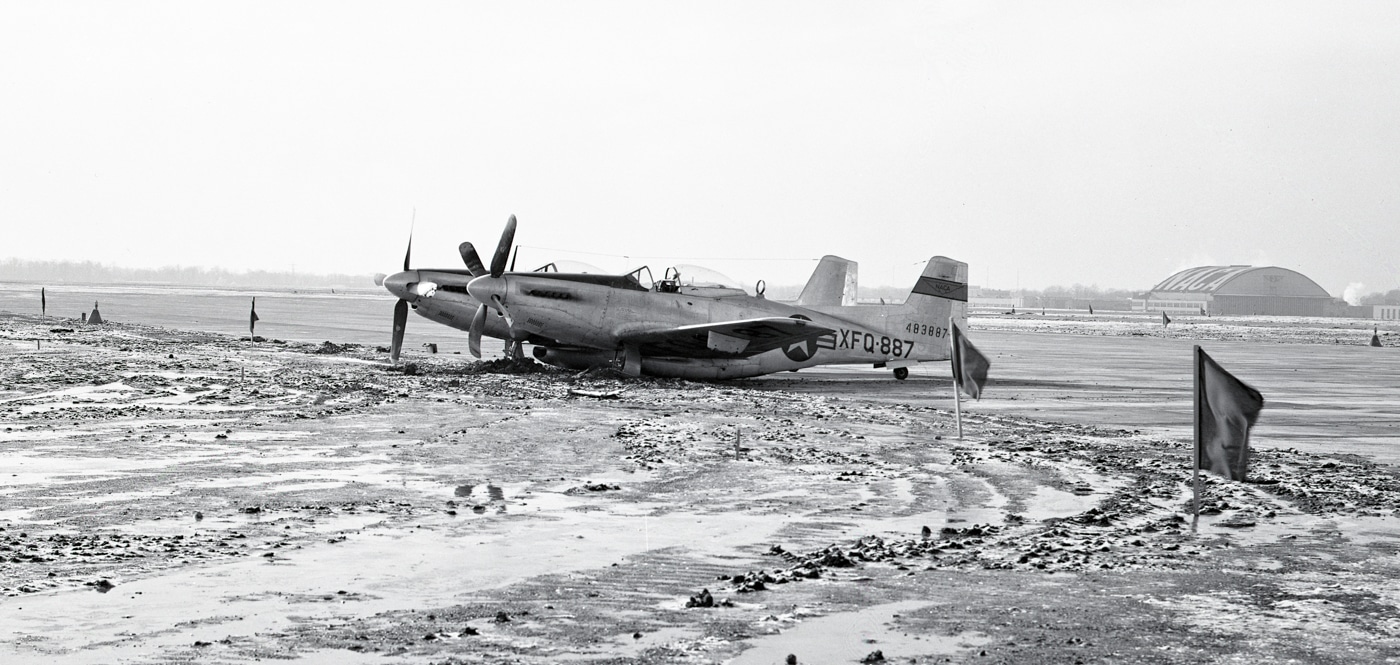
The remaining aircraft were either scrapped or sent to Alaska, where the attrition rate led to the many Mustangs being cannibalized for the remaining few. In June 1953, all remaining F-82s were sent to Elmendorf AFB for disposal.
The Legacy
The F-82 served admirably wherever it was needed. In Korea, it flew the first combat mission of the war and scored the first kills. In Alaska, crews flew countless missions patrolling the skies of Alaska, performing air defense duties and escorting B-36 Peacemakers to the top of the world.
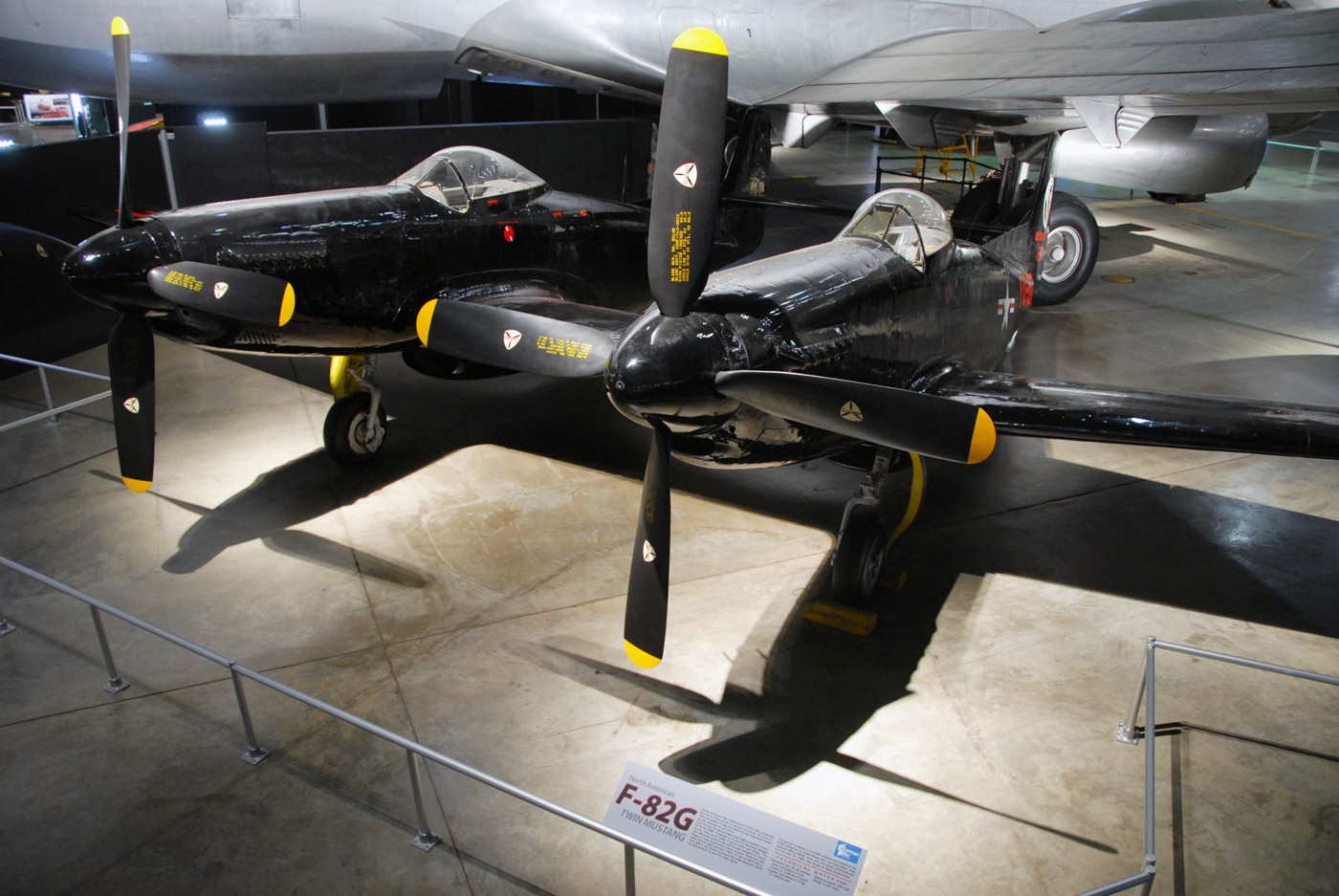
It served as an OPFOR for Strategic Air Command training exercises and dropped ordnance on ice-packed rivers, saving local villages from flooding in the spring. All in all, pretty impressive for a truly bizarre-looking fighter.
Editor’s Note: Be sure to check out The Armory Life Forum, where you can comment about our daily articles, as well as just talk guns and gear. Click the “Go To Forum Thread” link below to jump in!
Join the Discussion
Read the full article here








